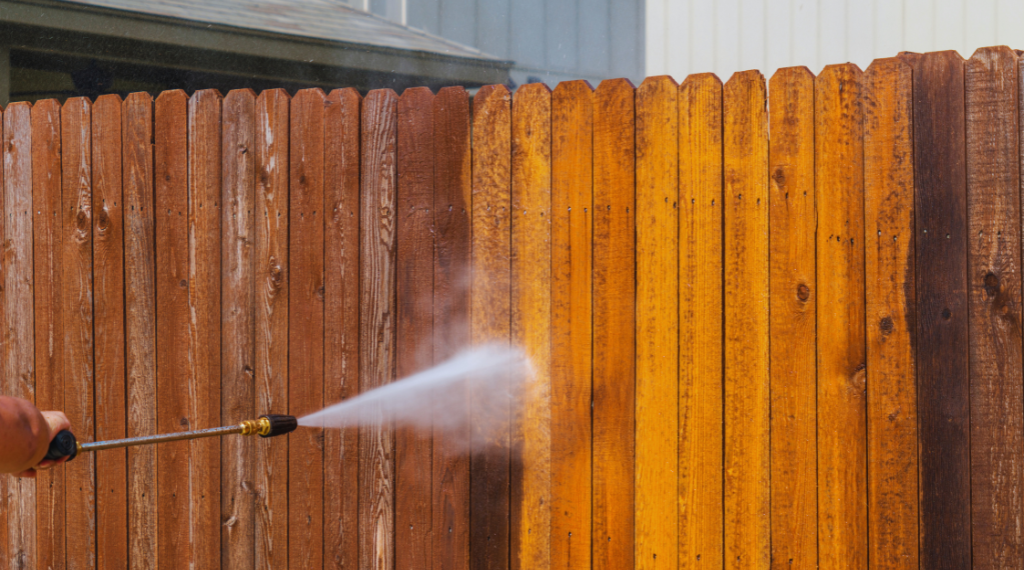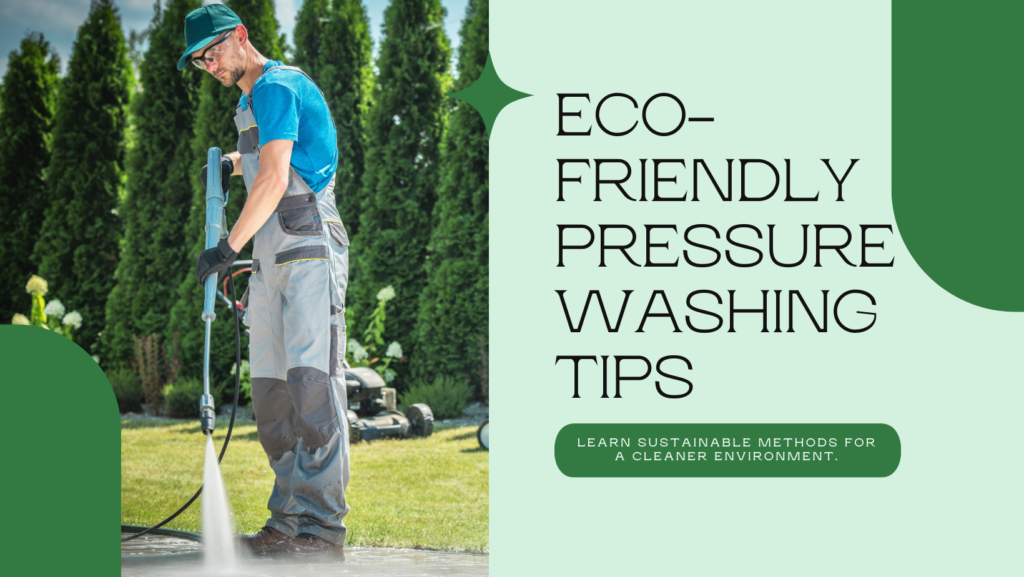As environmental awareness grows, so does the demand for eco-friendly practices in various aspects of life, including cleaning. Traditional pressure washing methods, while effective, often involve the use of harsh chemicals and excessive water, which can harm the environment. Eco-friendly pressure washing offers a sustainable alternative that minimizes environmental impact while still delivering excellent cleaning results.
This article explores various tips and techniques for eco-friendly pressure washing, ensuring that your cleaning practices are both effective and environmentally responsible.
Choosing Eco-Friendly Equipment
Electric or Solar-Powered Pressure Washers
One of the first steps in adopting eco-friendly pressure washing is selecting the right equipment. Electric pressure washer is a great choice as it produces fewer emissions compared to gas-powered models. For an even greener option, consider solar-powered pressure washers, which harness the sun’s energy to operate, further reducing your carbon footprint.
Water-Efficient Nozzles and Pumps
Using water-efficient nozzles and pumps can significantly reduce water consumption. High-efficiency nozzles are designed to use less water while maintaining strong cleaning power. Additionally, adjustable pressure settings allow you to control the water flow, ensuring that you use only the necessary amount of water for each task.
Biodegradable Accessories
Opt for accessories made from biodegradable or sustainable materials. Brushes, hoses, and other attachments that are eco-friendly not only reduce waste but also ensure that no harmful materials are left behind after cleaning.
Minimizing Water Usage
Pre-Soaking Surfaces
Pre-soaking surfaces before pressure washing can help loosen dirt and grime, making the cleaning process more efficient and reducing the amount of water needed. This simple step can save a significant amount of water over time.
Adjusting Water Pressure and Flow Rate
Adjusting the water pressure and flow rate according to the surface being cleaned is crucial. High pressure is not always necessary and can damage delicate surfaces. Lowering the pressure for sensitive areas like house siding can prevent damage and conserve water.
Spot Cleaning
Instead of washing entire surfaces, focus on spot cleaning areas that are particularly dirty. This targeted approach reduces water usage and ensures that only the necessary areas are cleaned.
Capturing and Reusing Water
Implementing a system to capture and reuse water can further enhance the eco-friendliness of your pressure washing practices. Filtered wastewater can be reused for other cleaning tasks or for watering plants, reducing overall water consumption.
Using Eco-Friendly Cleaning Solutions
Biodegradable and Plant-Based Detergents
When additional cleaning power is needed, choose biodegradable and plant-based detergents. These products break down harmlessly in the environment, preventing pollution of water sources and harm to local ecosystems. Avoid harsh chemicals that can cause long-term damage to the environment.
Natural Cleaning Agents
Natural cleaning agents like vinegar and baking soda are effective and eco-friendly alternatives to commercial detergents. Vinegar can be used to remove mold and mildew, while baking soda is excellent for scrubbing tough stains. These natural solutions are not only safe for the environment but also cost-effective.
Proper Dilution and Application Techniques
Properly diluting cleaning solutions ensures that you use only the necessary amount, reducing waste and environmental impact. Follow the manufacturer’s instructions for dilution and application to achieve the best results with minimal environmental harm.
Proper Waste Management
Capturing and Filtering Wastewater
Properly managing wastewater is essential to prevent environmental contamination. Use containment systems to capture wastewater during pressure washing. Natural filters like sand and activated carbon can be used to purify the water, making it safe for reuse or disposal.
Disposing of Waste Properly
Ensure that all waste, including cleaning solutions and captured debris, is disposed of according to local regulations. Avoid letting wastewater run into storm drains, as this can lead to contamination of water sources. Recycling options for cleaning solutions should also be explored to minimize waste.
Routine Maintenance and Prevention
Regular Cleaning to Reduce Buildup
Regular maintenance of surfaces can prevent the buildup of dirt and grime, reducing the need for intensive cleaning. This not only conserves water but also extends the lifespan of surfaces.
Protecting Surfaces with Eco-Friendly Sealants
Applying eco-friendly sealants to surfaces can protect them from stains and damage, reducing the frequency of pressure washing needed. These sealants are made from sustainable materials and provide long-lasting protection.
Addressing Stains Promptly
Promptly addressing stains and spills can prevent them from becoming stubborn and difficult to remove. This proactive approach reduces the need for harsh cleaning methods and conserves resources.
Case Studies and Success Stories
Businesses Implementing Eco-Friendly Pressure Washing
Many businesses have successfully transitioned to eco-friendly pressure washing practices. For example, a commercial cleaning company in the UK switched to biodegradable cleaning agents and low-pressure systems. This change not only reduced their environmental impact but also resulted in cost savings and attracted environmentally conscious customers.
Residential Examples of Sustainable Practices
Homeowners are also adopting eco-friendly pressure washing techniques. One homeowner used non-toxic cleaning agents and a low-pressure system to clean their driveway and patio. This approach effectively removed dirt without harming surrounding vegetation or contaminating water sources, demonstrating that eco-friendly pressure washing is both feasible and beneficial.
Eco-Friendly Pressure Washing – Clean Green, Live Clean

Eco-friendly pressure washing is a sustainable and effective way to maintain cleanliness while minimizing environmental impact. By choosing the right equipment, using eco-friendly cleaning solutions, managing waste properly, and adopting routine maintenance practices, you can achieve excellent cleaning results without harming the environment. As more individuals and businesses embrace these techniques, the collective impact on the planet will be significant, contributing to a cleaner and healthier world.

